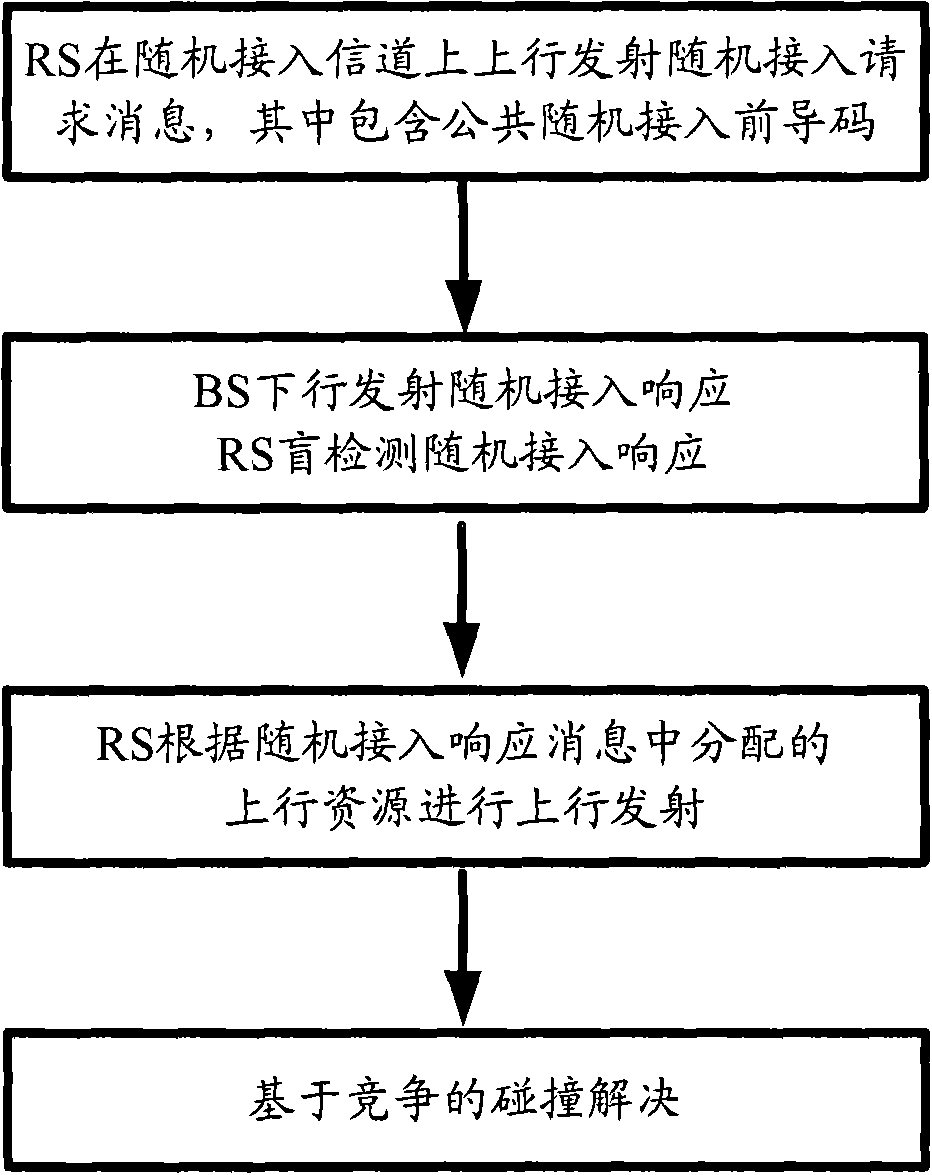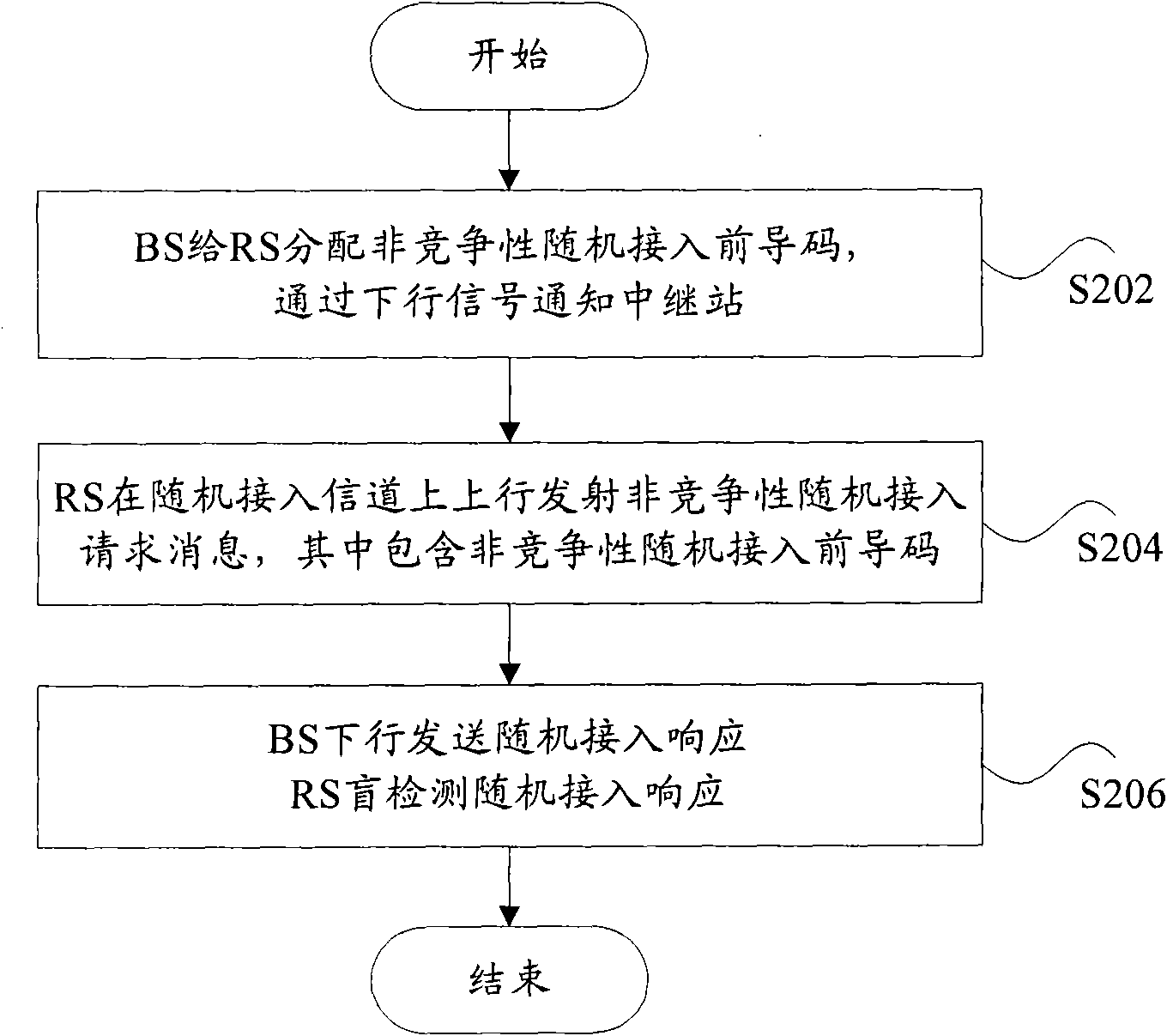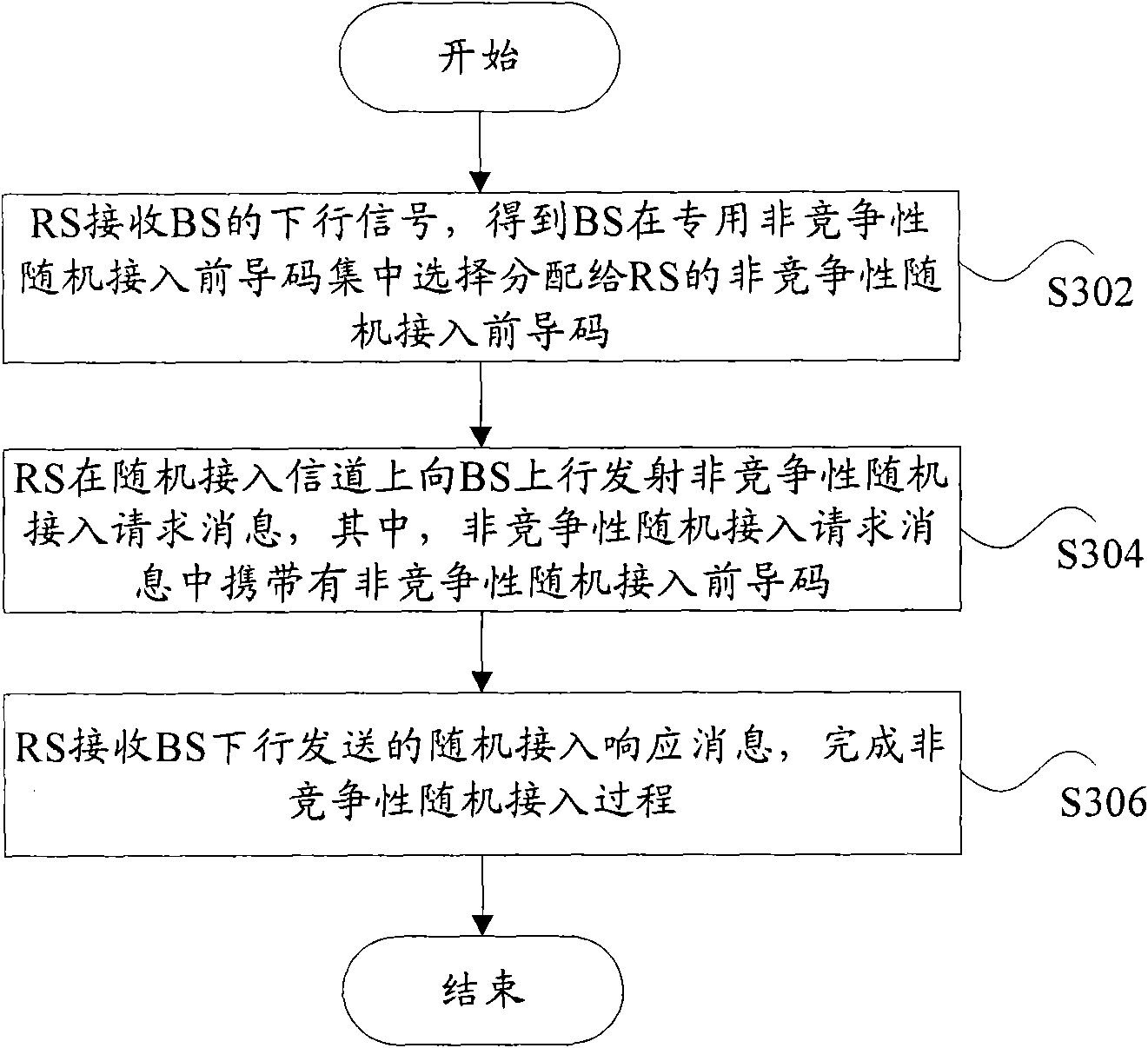Method and system for randomly accessing relay station
A technology of random access and random access preamble, which is applied in the field of communication, can solve problems such as cumbersome processing, occupation of preamble resources, and long delay, so as to simplify the access process, reduce access delay, and improve efficiency effect
- Summary
- Abstract
- Description
- Claims
- Application Information
AI Technical Summary
Problems solved by technology
Method used
Image
Examples
example 1
[0040] In Example 1, the technical solution of the present invention is described in detail from the perspective of a base station.
[0041] figure 2 It is a flow chart of the random access method of the relay station according to Example 1 of the embodiment of the present invention. Before performing the processing of the present invention, the base station first needs to set a predetermined threshold according to the actual situation and / or network performance requirements, and according to the predetermined threshold and predetermined parameters Judging whether the relay station needs to be activated for the relay service. Specifically, the base station determines that the relay station needs to be activated for the relay service when the predetermined parameter is greater than the predetermined threshold. The ratio of the number, and / or the service data rate of each user, and / or the parameters determined by the wireless link propagation environment between the user and th...
example 2
[0047] In Example 2, the technical solution of the present invention is described in detail from the perspective of the relay station.
[0048] image 3 It is a flowchart of a random access method for a relay station according to Example 2 of an embodiment of the present invention, such as image 3 shown, including the following processing:
[0049] Step S302, the relay station receives the non-competitive random access preamble selected by the base station in the dedicated non-competitive random access preamble set and assigned to the relay station;
[0050] In step S302, before the relay station receives the non-competitive random access preamble sent downlink by the base station, the relay station also needs to monitor the message sent by the base station.
[0051] Step S304, the relay station sends a non-competitive random access request message uplink to the base station on a random access channel, wherein the non-competitive random access request message carries a non-...
PUM
 Login to View More
Login to View More Abstract
Description
Claims
Application Information
 Login to View More
Login to View More - R&D
- Intellectual Property
- Life Sciences
- Materials
- Tech Scout
- Unparalleled Data Quality
- Higher Quality Content
- 60% Fewer Hallucinations
Browse by: Latest US Patents, China's latest patents, Technical Efficacy Thesaurus, Application Domain, Technology Topic, Popular Technical Reports.
© 2025 PatSnap. All rights reserved.Legal|Privacy policy|Modern Slavery Act Transparency Statement|Sitemap|About US| Contact US: help@patsnap.com



